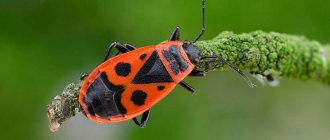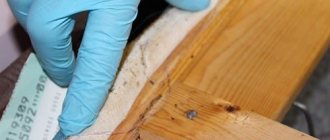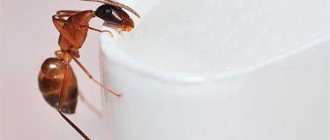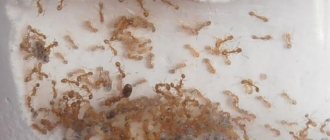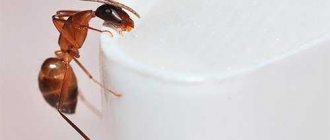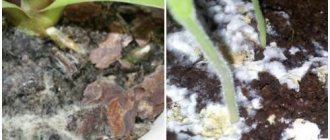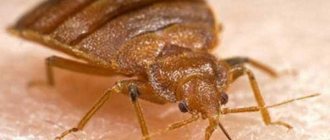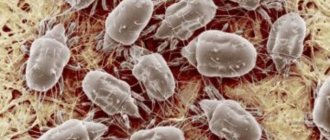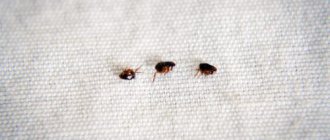Growing fruit and berry crops is painstaking work in itself. It is necessary to take care of planted plants taking into account unpredictable weather and climate. There are many diseases that need to be prevented and treated as soon as possible. Numerous pests cause considerable damage to the future harvest. Many of them are familiar to every gardener: snails, Colorado potato beetles, and so on. But not everyone knows how much damage the wingless red bug (Pyrrhocoris apterus) can cause. Therefore, it is worth considering what soldier bugs look like, what they eat, and how they reproduce. It is also important to determine why these pests have chosen the summer cottage and how best to deal with them.
External differences of the soldier bug
The body of the soldier bug is round, slightly flattened. The insect has a bright color: the body is black, the pronotum and elytra have a red pattern. Bedbugs have no wings. The eyes are red, the mustache and paws are black. The length of the soldiers is 8–11 mm. The oral apparatus is equipped with a piercing-sucking proboscis, which is in a horizontal position.
lenslenses
adventurenaturetime
dicdoc.macro
When eating food, the proboscis tenses and becomes like a needle. With its help, the insect pierces plants and feeds on cell sap.
Red bugs often gather in groups in one place - adults and larvae, which is a distinctive feature of the species. The name “soldiers” comes from the property of being arranged into unique divisions and the colors of the chitinous cover.
Who is often confused with?
The red bug is often confused with two insects:
- Firefighter beetle, soft beetle (Cantharidae). In fact, insects have nothing in common with each other, except for confusion in names. The fire beetle belongs to the order Coleoptera. It has a long body 1–1.5 cm - twice as long as that of the soldier bug. The elytra and tarsi are black, with filamentous whiskers. The mouthparts are gnawing. Insects have wings with which they move through the air. The beetle's abdomen is orange or red.
a.koptyrevana_tasha.sh
gita089
- Blackhead (Corizus hyoscyami). In appearance, the insects are very similar to each other. The differences are in the position of the head: triangular, slightly tilted, and the shape of the pattern on the back. The eyes are darker than those of the soldier bug - closer to brown. Insects live mainly on umbrella plants: onions, dill. The larvae feed on henbane and tobacco leaves. The henbane bug is very similar to the soldier bug
In England, the soft beetle is called the soldier beetle due to the similarity of its color to the uniform of the royal guards.
Interesting facts about red bugs
- In winter, soldier bugs hibernate and stay there from December to March; they prefer to spend the winter in dry wooden structures or trees.
- Habitat: rotten stumps, fallen trees, wooden fences, vegetable garden.
- The type of development of the soldier bug is incomplete metamorphosis, i.e. transformation without a transitional stage - pupa.
- They leave behind an unpleasant odor. It stinks if you touch it, but it stinks more if you crush it.
- Bed bugs bite humans, the soldier bug does not bite, so you won’t even find photos of bite marks.
- The soldier bug is an insect with an appearance of the Müllerian mimicry type; its protective (warning) coloring is similar to that of a ladybug and some other insects.
- Birds do not eat the soldier bug, as it is poisonous and has a bright color.
- It does not bring any benefit to the garden or nature, only harm.
- The soldier bug lives from 6 months to a year.
- The soldier bug is often confused with the fireman beetle, although their differences are colossal.
Life cycle
The lifespan of the wingless bug is 12–14 months. When living in warm regions, two generations of insects appear, in cold regions - one.
The soldier larva does not have such a bright cover
By the end of August, the soldiers' metabolism slows down, i.e. they are preparing for hibernation - suspended animation. After going to sleep, insects survive due to the nutrients accumulated over the summer period and slow metabolism.
The awakening of bedbugs occurs in March - April, as soon as the sun begins to warm the earth and the first vegetation appears. Some young individuals and females cannot withstand the spring cold and die. In May, adult female bedbugs lay eggs. The process of insect formation takes place in several stages: egg – larva – bug. Newly formed females continue breeding in mid-late June.
Features of character and lifestyle
Photo: Fireman beetle in nature
In appearance, the fireman beetle evokes only positive emotions. But its harmless appearance hides a real predator. Firefighter beetles spend almost all day hunting. They stalk their prey in flight, then grab it with their powerful jaws, bite it, and then consume it after exposure to venom. In warm weather, firemen can often be seen on various plants. There they not only bask in the sun, but can also have a snack. Insects gnaw only the fleshy parts of plants.
Firefighter beetles lead an active lifestyle. During the day they fly a lot, love to land and sit for a long time on plants, grass, flowers and fruit trees. These insects are attentive and have a good reaction. If any object approaches, they instantly fly into the sky. If it fails to fly away, the insect can pretend to be dead. To do this, it tucks its paws under itself.
Interesting fact: You should not try to pick up a fireman's beetle. He bites very painfully and releases a special odorous substance at his offender. The insect has sharp teeth and powerful jaws. The bite is quite painful.
Soft beetle larvae spend their day differently. They live on fallen leaves, soil or old wood. They overwinter under the roots of trees, buried deep in the soil or under foliage. The larvae have three pairs of legs, so they move easily and quickly. With the help of powerful jaws, they make their way, making tunnels in the tree. Little firemen feed on centipedes and worms. Outside the shelter, larvae appear very rarely. The only exception is the period of active snow melting. The larvae crawl out to escape the melt water.
What does it eat?
Soldier bugs feed on seeds, juice of plants and fruits, and the remains of other insects. They get food closer to the ground; they will climb a tall tree only as a last resort. In the absence of sufficient food, bedbugs feed on weeds and even their own relatives.
Red bugs have a powerful proboscis that can pierce fairly hard shoots and plant seeds. Insects are not capable of harming humans. The proboscis cannot pierce the skin of an adult or child.
Small larvae feed only on the sap of young shoots. The mouthparts are not fully developed, and insects are not able to pierce other plants.
Soldier bugs, like all representatives of the species, have odorous glands. In adult insects they are located on the chest, in larvae - on the abdomen closer to the dorsal part.
What harm do bedbugs cause?
When they first meet a soldier, garden owners probably think about the benefits and harms of this insect. The negative impact of bedbugs has a serious impact on agricultural activities.
The damage that beetles cause with their proboscis is expressed in the following:
- spoil the fruits, which then become inedible.
- They destroy crops using the cell sap of shoots for food.
Vineyard owners suffer the most - the soldiers immediately attack the shoots of the crop and the fruits.
This insect is not dangerous for humans. Due to the structure of their proboscis, parasites are not able to pierce human skin.
If a pest crawls along your arm, the only noticeable discomfort will be due to the scratching of its paws on the skin. It is these sensations that people sometimes mistake for the bite of soldier bugs.
If the insect does end up in the room, it is enough to simply get rid of it without additional chemical treatments. As a preventative measure, you can wipe baseboards and wooden furniture with vinegar or kerosene.
Where is it distributed?
The soldier bug is widespread throughout Eurasia, northern Africa and the United States. Countries with a temperate climate are favorable for insect reproduction.
Bedbug habitat:
- under the bark of trees;
- on stumps;
- in piles of dry grass and leaves;
- at the foundations of houses, baths, gazebos and other outbuildings;
- in the fence and its foundation.
kath_gruen
disorder_vortex
entomologist_arina
During hibernation, insects are found under heaps of garbage, in humus, in trees - under the bark or in hollows.
When does the insect appear and where does it live?
Usually the soldiers appear as soon as the sun melts patches of snow to the ground, but here and there there is still crust, and in the thawed patch the soldiers are already scurrying around, huddled together. The primary habitat of the soldier is Eurasia, and the European continent is most preferable for him.
Interesting . The pest, although it is very similar to a beetle and has the closest structure to it, will not fly up like a ladybug from your finger, but rather crawl down and go down to the ground or simply fall - it cannot fly at all, individuals of any age have this possibility deprived.
Larva of the soldier bug. © Genealogist
Mating of soldier bugs
How does it reproduce
Insects reproduce rapidly during the spring and summer. In warm regions, bedbugs produce two generations from May to July. The colony quickly increases in size and, when living on the site, rapidly “attacks” cultivated plants.
When mating, the male and female are attached to each other by the rear parts of their bodies. Insects can remain in this position from one to two hours to several days. After the seed cells enter the female’s body, the bugs separate.
cora_jones_wild1752
koreneva_irina23
medvebooks
The female lays eggs in habitats, on plant leaves or in such a place that it is easier for the larvae to get food. The clutch can consist of 16–30 white eggs, shaped like grains of rice. On the top of the eggs, peculiar caps are formed, through which the larvae appear - after seven to ten days.
lilabums
Young individuals can remain motionless for a long time, feeding on the sap of the plants on which they are located. In appearance, they differ from adult insects not only in their small size. The larvae are completely red, without black inclusions.
Description
The bug is medium-sized - 7-12 mm long. The body is oblong, the back has a characteristic black and red ornament, distinguishing it from other insects. The top and bottom of the abdomen are black with a red rim, the chest is black with red edges. The eyes are red. The hind wings are usually absent. The mouthparts are piercing-sucking, in the form of a proboscis.
Reasons for appearance
The main reasons for the appearance of soldier bugs on the site include:
- rotten stumps in the garden;
- dried plants;
- piles of dry garbage and leaves;
- a large number of weeds, especially quinoa and wormwood;
- legumes;
- woodpiles;
- alfalfa in your or neighbors’ garden;
- growing carrots, cabbage, beets, and currants on the plot.
Insects especially love alfalfa. To get rid of the larvae, you need to pull out the weed along with the roots and burn it.
All gardeners have the soldier bug
The insects often nest in legumes and alfalfa to survive the winter cold.
In some cases, bedbugs may appear in an apartment, more often in a private house. If you have indoor flowers, seedlings or other vegetation, insects will multiply very quickly. There is a tendency that when one soldier appears, other relatives come running after him. In the absence of food, they die or go to other places.
Damage caused
Massive concentrations of soldier beetles are capable of destroying crops, causing significant harm to agriculture, so the threat posed by the pest is more than obvious. If you decide to fight red bugs in your garden, make sure that this particular insect is parasitizing your plants; this can be determined by a number of signs:
- The presence of a large number of soldier beetles in a vegetable garden or garden, they are easy to notice due to the bright red color of the back with a black pattern;
- Buds and inflorescences fall off soon after appearance;
- Umbrella plants such as cilantro, parsley and dill are especially susceptible to pest activity. After the insect's meal, the plants dry out in the shortest possible time;
- After parasitism on young shoots of carrots and beets, the plants, if they do not die, then begin to lag behind in their development, the foliage takes on a twisted appearance.
How to fight insects
When pests appear, it is necessary to immediately take measures to destroy them. Insects reproduce quickly and can cause considerable damage to garden crops. There are different methods to get rid of the soldier bug.
Natural enemies
The natural enemies of soldier bugs are birds, mantises and bats. A pungent odor can scare off certain birds, such as tits. Sparrows are good at destroying insects, but they can also harm crop plants. When red bugs get caught in a web, many spiders discard them due to the pungent odor.
Its poisonous color and smell make it invulnerable
The coloring of the red bug is a camouflage with which it protects itself from natural enemies. For birds and spiders, red is a signal that the insect is poisonous and should not be eaten. Soldier bugs are well protected from destruction precisely due to this property.
Chemicals
When using chemicals, it is necessary to take into account that when insects are killed, harm will be caused to the soil and the plants themselves. Soldier bugs have the ability to adapt to pesticides, so each subsequent generation does not die from the previously used poison.
Methods for getting rid of soldier bugs:
- independent processing of the site. In this case, you must carefully read the instructions to comply with the indicated dosages, processing times and precautions. Karbofos, Malathion and Aktara are used as poisons, which cause paralysis of insects. The powder drug “Bankol” effectively destroys soldiers. For use, the product is diluted in water. The pesticide is considered to be of low toxicity to plants, soil and people;
mir_zelenyi89succulentia.ru
- professional disinfestation. Experts will select a product taking into account the characteristics of the soil. This type of treatment is especially recommended for large areas. The advantage of turning to disinfectants is the comprehensive destruction of various types of pests.
In a house or apartment, soldier bugs can be destroyed using regular Dichlorvos.
Light traps
Light traps are used to catch insects. With their help, you can reduce the population of soldier bugs, but they cannot be completely eradicated. Most often, males and unfertilized females fall into them.
There are many types of traps, and you can easily buy the most suitable one in stores. The operating principle depends on the type of light emitted:
- ordinary light is visible radiation. Pests crawl into the light and stick to the adhesive surface or are sucked in by the built-in fan;
- ultraviolet light is invisible to humans. An insect attracted by radiation is killed by the electrical grid. ultraviolet light light trap
Various powders and agents are added to some types of traps that impede the movement of bedbugs or paralyze them, as a result of which the insect dies.
Traditional methods
To destroy soldier bugs, you can use traditional methods that will not cause any harm to cultivated plants and soil.
The following means are used to control insects:
- Onion peel. Pour the husks halfway into a large container and fill with cold water. Leave for 5-6 days. Strain the finished infusion and treat the plants on the site with it.
- Soap solution. Grate 300 g of laundry soap onto ten liters of water on a coarse grater. Treat the plants with the prepared solution. It is not recommended to increase the amount of soap.
- Mustard powder. To process 1 sq. m of plot is needed for 10–12 liters. add 100 g of powder to water. Leave the solution for 1.5–2 hours. Treatment can be carried out once every 10–14 days.
- Wood ash. Dilute 200 g of product into a bucket of water. Using wood ash you can not only kill insects. The natural product is beneficial for the soil - it enriches it with potassium.
- Hunting belts. Special windings are attached to tree trunks, onto which poisonous or sticky substances are applied that restrict the movements of insects. They can be formed in the form of funnels and bowls equipped with containers.
- Manual assembly. Soldier bugs move quickly, so collecting them will not be easy. Use shovels to shovel large accumulations into prepared containers for disposal. Squash single insects directly on plants, like Colorado potato beetles. Traditional methods of control will help repel pests
When soldier bugs enter a living space, they are destroyed using kerosene or vinegar. To do this, treat baseboards, furniture legs, and plinths with the product. To catch single representatives, you can lay out sticky strips - Velcro - on the floor.
Where do little red bugs come from?
Since the wingless red bug is accustomed to a humid and fairly warm climate, its natural habitat can be designated as the tropics and subtropics.
North America, North Africa, temperate Eurasia - these are the areas where the small soldier feels quite comfortable.
It is difficult to say exactly where red bugs come from in our latitudes. However, due to the peculiarities of their structure, parasites are quite adaptive. Even once they get into a person’s home, they can easily find food for themselves in the form of indoor plants.
To prevent pest infestation of the garden, it is worth cleaning the area in a timely manner. Elimination of rotten stumps and old trees, as well as periodic disinsection, will help get rid of unpleasant parasites.
Why is the soldier bug harmful?
Soldier bugs are far from harmless animals, as is commonly believed. They feed not only on seeds and remains of dead insects. Pests suck the juice from young shoots, leaves, and fruits, causing great damage to garden crops.
Damage caused by firebugs:
- they like to suck the juice from grape fruits, as a result, the yield of the bushes is significantly reduced. Damaged berries become unsuitable for food;
- The insect's proboscis is quite powerful, so it can pierce hard seeds and thick shoots. The plant from which bugs suck out beneficial juices gradually stops blooming, bearing fruit and dies;
- affects tree trunks and branches;
- damages cabbage and beet leaves, leaving small punctures on them;
- destroy seeds sown in the soil;
- are dangerous pests for emerging seedlings. The bugs suck out the nutritious juice, causing the sprouts to dry out.
Fire bugs cause harm when there are a lot of them
A large colony of insects can cause significant damage to summer cottages, farms and vineyards.
Habitats
Beetles, popularly called soldier beetles, are most often encountered on the street or in the garden. They nest in old rotten wooden logs, tree trunks or plank fences. Sometimes such surfaces are literally strewn with colonies of soldiers.
But in these places, insects just rest, but to obtain nutrients they go hunting, depositing young growth in the garden and causing irreparable damage to the crop in the garden. Gardeners often find soldiers in cabbage , carrot or beet tops, on the leaves of garden trees or currant bushes. In any case, if the owner of the site discovers colonies of soldier beetles nearby, he should immediately think about how to drive them away.
Despite its outwardly harmless appearance, the bug causes serious damage to garden crops. The insect lays eggs directly in plants (on leaves or stems), while simultaneously sucking out all the juice from them. They are especially dangerous for elite grape varieties. Due to the fact that they feed on the juice of garden crops, they are classified as serious pests. The gardener must understand that it is not so much the adult soldier bugs that cause harm, but rather their eggs and larvae. And for this reason, their appearance in the garden area should be prevented in a timely manner. Often these garden pests cause damage to young shoots of beets, carrots, dill and other garden vegetation. Plants that have not yet become strong and have not gained vitality simply die from the influence of soldiers.
What does the soldier bug eat?
In order to effectively combat garden pests, it is necessary to understand what these insects eat and where do they live?
The red beetle with black spots, popularly known as the soldier bug, is completely unpretentious in food. Few people know what soldier beetles eat, but this information is very important, especially for gardeners who can suffer significant losses from black-and-red pests.
So, in order to exist fully, the red-black beetle only needs plant sap. He obtains it by piercing leaves or stems with a sharp proboscis. After such an impact, the cultivated vegetation stops bearing fruit and gradually dies off. If soldier beetles damage vegetable, fruit or berry fruits, then they cease to be suitable for consumption. If there is no fresh sap nearby, then black-and-red bugs can even eat carrion. Bed bugs gather in colonies on dead insects, and sometimes they can even be seen on the corpses of vertebrate animals. Oviposition is done by this insect directly on the leaves, cuttings and stems of plants. This prevents the risk of food shortages for the young. Young red larvae will always find something to eat, thanks to this placement of oviposition. Gathering in large colonies, they cause irreparable damage to many garden and vegetable crops:
Preventive methods
To prevent the appearance of soldier bugs, you can take the following measures:
- Planting on a cohosh plot. Translated from Latin, the plant is called black cohosh. The smell of flowers repels insects, and they try to immigrate away from it. It is convenient to plant the plant around the perimeter of the site. You can also use other plants: wormwood, mustard.
- Plant grape bushes and other cultivated plants away from alfalfa and legumes, which are especially loved by soldier bugs.
- Destruction of weeds on the site. Weed your garden in a timely manner. As the grass grows, the number of pests increases, as does the number of eggs laid. If possible, burn the grass as there may be larvae on the leaves.
- If there is a lawn on the site, the height of the grass should be as minimal as the type of cover allows.
- Do not leave heaps of garbage or fallen leaves on the site - the favorite habitats of red bugs.
- If there are rotten and old stumps, it is necessary to uproot them and burn them.
Soldier bugs reproduce quickly and can cause significant damage to cultivated plants. At the same time, they have a thin chitinous cover and a poorly developed nervous system, so they are easy to destroy. Carrying out preventive measures will protect the area from insect infestation.
Prevention measures
It is enough to follow a number of rules to prevent the invasion of soldier beetles in your garden or summer cottage. For example:
- Soldier beetles love legumes and alfalfa, so it is better to plant them in a separate area.
- Alfalfa and weeds must be mowed so that no stems remain (at the root).
- It is better to burn the remaining weeds, if any.
- Do not allow rotting wood to remain on the site.
- It is better to treat the trunks of fruit and berry crops with lime, and dig up the root zone well.
- You should not get carried away with excessive fertilization of the soil on the site.
The soldier beetle is not a common pest, but under certain conditions, it can harm the future harvest. Bed bugs attack young shoots and plants more, so it is advisable to take a number of actions to prevent these pests, and others, from appearing on the site. There are pests that cause much more serious damage. In any case, it is necessary to take care of the future harvest, since a lot of work is put into it.
Soldier bug. In excellent quality. Full HD 1080p
Natural enemies of firefighter beetles
Photo: What a fireman beetle looks like
The fireman beetle is a unique creature. Despite his modest size and very soft body structure, the firefighter successfully resists natural enemies. The thing is that in nature, the bright red color of the body indicates great danger. Predators, birds and other animals try to avoid such beetles, preferring easier and safer prey.
Why is the fireman beetle so dangerous to other animals? The red color of this insect indicates its high toxicity. It is so indeed. In case of danger, a fireman bites painfully and shoots a special poison at his offender. For many animals this poison can be fatal; for others it will cause a huge number of health problems.
Only occasionally are fire beetles attacked by birds of prey and some amphibians. They can also become prey for domestic animals. The most dangerous enemy of firefighters is man. When these beetles multiply rapidly, people resort to exterminating them using various methods. In the fight against firefighters, both humane and lethal methods are used. The thing is that too large a population of these insects can cause significant damage to plants, bushes and trees.
How to get rid of it: effective methods of control
Firstly, it should be remembered that these insects can harm the future harvest and very seriously. First, you need to accurately determine that the pest is the wingless red bug, since garden crops are damaged by other, more dangerous insects.
Plant infection is determined by a number of signs. For example:
- Beet shoots die quickly.
- First, the leaves begin to curl inward.
- Umbrella crops such as dill and carrots also disappear quickly.
- The buds of garden flowers begin to fall.
- Cabbage heads are starting to suffer from yellow spot.
It is important to know! It is preferable to start exterminating the pest in the spring, before they begin to multiply and destroy young shoots of plants. In this case, you must not forget about the larvae and eggs.
Mechanical removal method
If there are not so many wingless red bugs in the area, then you can catch them by hand, although this will have to be done for several days in a row. Despite the fact that this method of fighting takes a lot of time, it is considered quite effective.
Hunting belts
Catching belts are used to protect garden trees. They can be purchased at a retail outlet or made yourself. To make such a simple device, you will need a piece of corrugated cardboard, up to 25 cm wide. The cardboard is cut across the grooves, after which office glue is applied. On the reverse side, glass wool, up to 1.5 cm thick, is attached to the cardboard, after which the belt must be secured to the tree using wire.
Control with insecticides
If there are too many soldier beetles, you will have to use toxic substances such as insecticides. The Japanese remedy “Bankol” is considered a fairly effective drug against soldier beetles. The basis of this insecticide is the substance bensultap. The product is sold in sachets of 10, 25 and 100 g and is a white or cream-colored powder. The drug paralyzes insects and after a couple of days they die.
The advantages of the product include:
- This toxic substance does not pose a danger to humans or to many beneficial insects, such as bees.
- The product does not have an unpleasant odor.
- Its components do not accumulate in the ground. It can be used in hot weather.
For 10 liters of water you need to take 5-7 g of the substance, but before that it should be mixed in a small amount of liquid. The product is sprayed onto the plants. Consumption of the substance is 5-10 liters of solution per 1 sq.m of garden.
In addition to Bankol, other drugs are also suitable, such as:
- Actellik.
- Karbofos.
- Aktara.
These insect control agents are harmful to humans, so you can work with them using personal protective equipment. The working composition must be prepared strictly according to the instructions.
Folk remedies
Folk remedies prepared according to folk recipes are not toxic compared to chemicals.
Effective recipes:
- Take 10 liters of water and 200 g of onion peels. After this, the product is infused for about 5 days. The infusion is filtered and the plants are sprayed with it every 5 days.
- For 1 bucket of water, take 100 g of mustard powder or wood ash. Plantings are treated with this solution.
- Take 300 g of soap per 10 liters of water and dissolve it, after which the plants are treated with this solution. There is another option: the trimmed area is sprinkled with crushed pieces of soap, after which this area is watered. After this, you need to throw a piece of fabric over this place, the bugs will start running out and get on the piece of fabric. All that remains is to quickly collect the fabric along with the bedbugs and throw it away.
When it’s hot outside, the intensity of treatment can be increased by waiting until the soil dries well.
